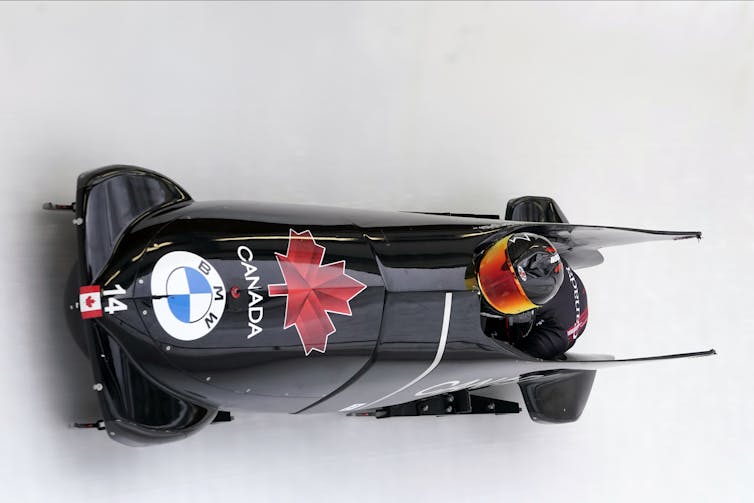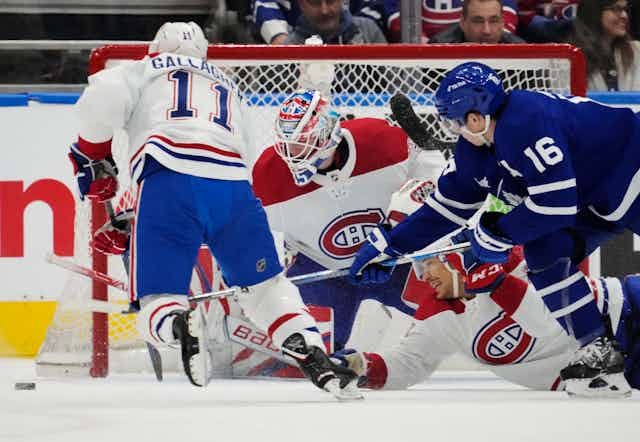Canadian sport has been rocked by a series of scandals in recent years. National sporting bodies that govern bobsleigh and skeleton, alpine skiing, water polo, boxing, gymnastics, artistic swimming, soccer, hockey, rugby and rowing have all faced major criticism for abuse, neglect and discrimination.
University sport teams have also faced their share of scandals including Lethbridge, St. Francis Xavier, Windsor, Victoria and Guelph. And amateur clubs aren’t immune either.
Athletes often recount how, at the very least, sport built their character and at the very most, saved their lives. But currently, Canadian sport itself needs rebuilding.
Imbalance of power
Efforts are underway to clean up sport in Canada, but if sporting bodies and athletes want to prevent abuse from occurring, we must re-engineer the structures, policies and practices that lead to abuse in the first place.
Read more: To clean up Hockey Canada, financial transparency is a must

At the core of abuse is an imbalance of power where one person, group or body controls all the resources, decision-making and information.
Total control can only be achieved through a lack of accountability, and examples exist at all levels in Canada:
Hockey Canada lacked a system of accountability to members, professional principles, or an overarching governing body. This led to their board and CEO controlling the money, information and decision-making and quickly devolved into corruption, and protectionism.
The same lack of accountability exists at university level sport which can lead to a toxic mix of intergroup dynamics and groupthink.
At the club level, volunteer burnout and resource scarcity causes a gap in oversight, accountability and transparency and leads to an environment that tolerates or even rewards abuse.
A team without strong athlete representation, transparent and independent avenues for feedback, or powerful coaches or sport leaders can foster susceptible followers who soon become colluders, conformers or abusers.
Most of the abuse issues in Canadian sport stem from failures of leadership and governance, and most of the change has been driven by athlete movements and associations, journalists, academics and fans. The most productive and promising source of positive change in sport continues to come from the bottom up.
Change from the bottom up
A great deal of change has been sparked by this bottom-up movement including a new Universal Code of Conduct, an independent Office of the Sport Integrity Commissioner and a more trauma-informed complaint process.
True Sport is a bottom-up initiative by the Canadian Centre for Ethics in Sport designed to help Canadians reclaim the promise of sport. Canadian academics have led the way in understanding abuse problems in sport. Yet, sport in Canada is currently caught in a hierarchical system that fosters power imbalance and thus perpetuates the abuse at all levels.
Our research at Royal Roads University highlights the need for accountability frameworks, power-balanced organizational structures and processes, and educational programming for all sport participants.
While removing bad apples from the barrel is necessary, we must then refine the barrel itself. Every sport participant has the power to build a safe, quality, fun and exciting sport system in Canada.
Sport leaders can start by learning from sport itself. At its heart, sport is a collaborative endeavour for the mutual benefit of all. The word compete is derived from the Latin competere which means strive together.
Sport can build great people, communities and nations. Nelson Mandela described sport as a tool against racism:
“Sport has the power to change the world. It has the power to inspire. It has the power to unite people in a way that little else does… It laughs in the face of all types of discrimination.”
The Invictus Games were founded upon this principle of recovering from violence, rebuilding trust and regenerating hope with fellow athletes.

Inclusive environment
Likewise, sport leaders at all levels can lean on these principles of sport to shape the sport environment in ways that balance power and ensure better experiences for all sport participants with the following strategies:
Language — State the purpose of sport verbally, visually, and structurally:
A sport organization should be open to all abilities and for the sake of individual and community development.
Be guided by the values of equity, friendship, and integrity and reflect regularly on whether we are living these values fully.
Frame challenges as opportunities to make the team, club or system better just as we do on the field or court.
Practice — Function in a way that honours everyone:
There are multiple ways to participate in our sport.
The goal is for every sport participant to have an excellent experience.
Structures — Build an environment that promotes equity:
The CEO, head coach, or club manager, like a team captain, is a coordinator of activities and people — not the boss.
The board’s role, like a coach, is to set, support and monitor the standards of practice for the organization, not to run the race.
Forums, surveys and communication channels are pathways to question and learn together as a whole organization.
We know from research on psychological safety that a safe environment is crucial to excellent sport experiences. Psychological safety hinges on leadership and the ability to foster an environment where participants feel they belong and are safe to contribute, express ideas, learn, experiment and grow individually and collectively.
Cultural integrity, values alignment, or walking the talk of human and social development builds trust in the leaders and environment and gives people the safety and confidence to truly excel.
Canadians can reclaim sport by prioritizing individual and community development over dominance and control. This can be done at any level through our words, actions and structures.
By creating sport environments that actively welcome people, invite contribution, see failure and mistakes as learning opportunities, and provide avenues and opportunities to challenge the system as a whole, we will be true sport leaders.

